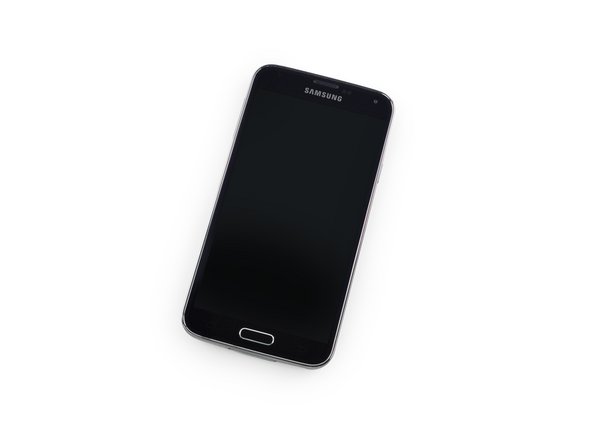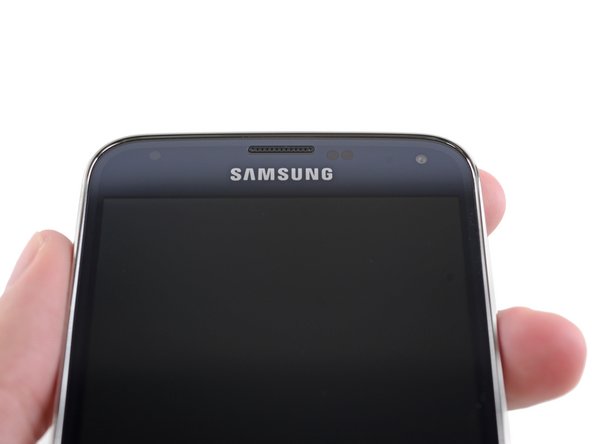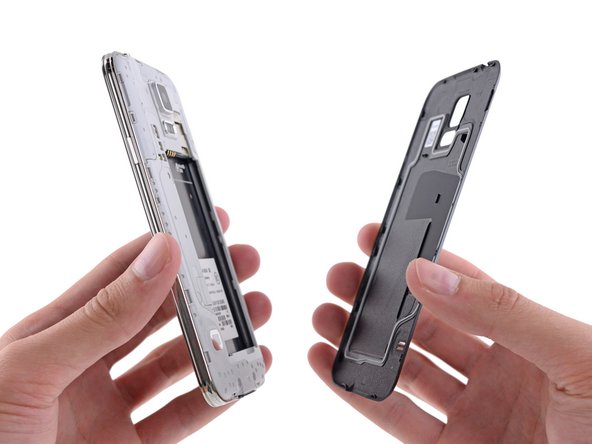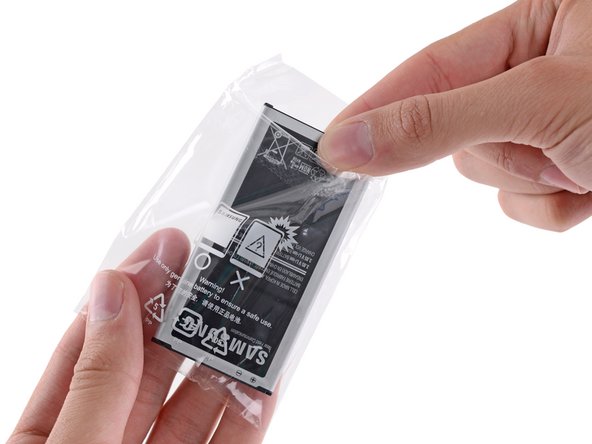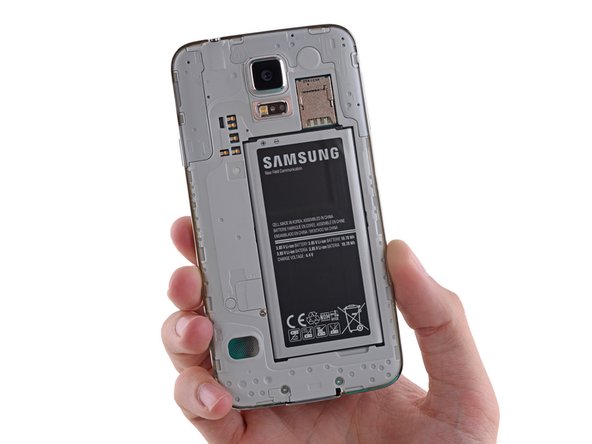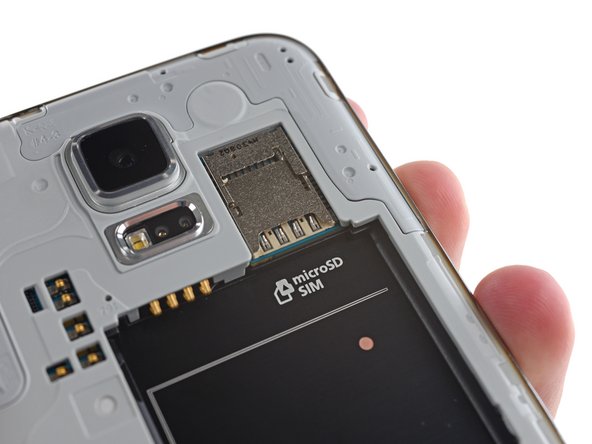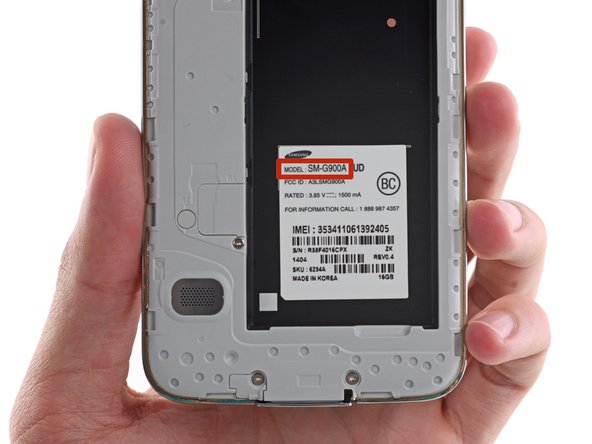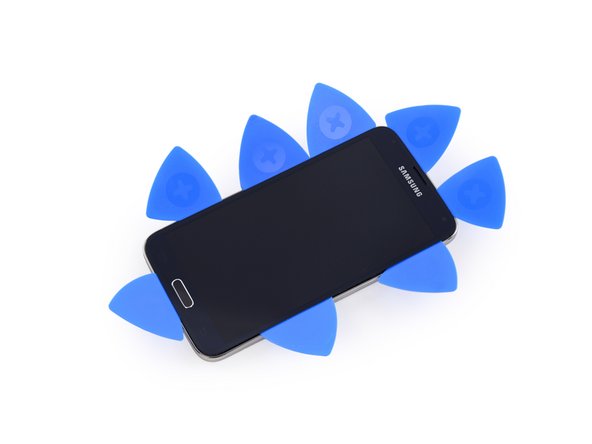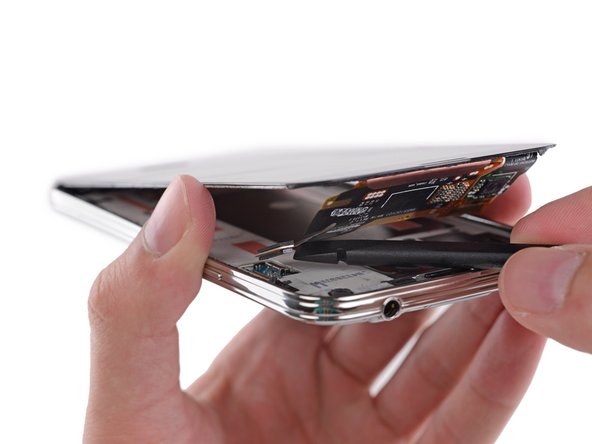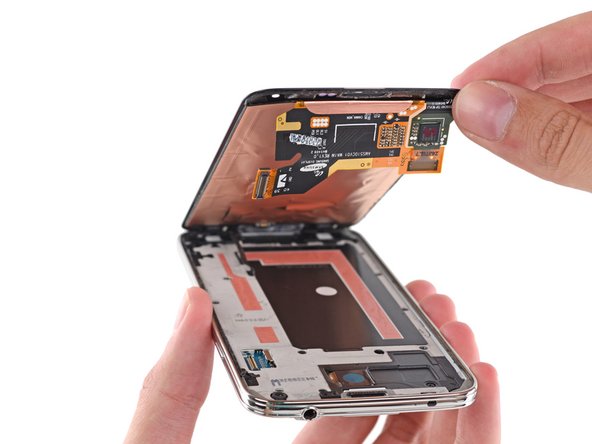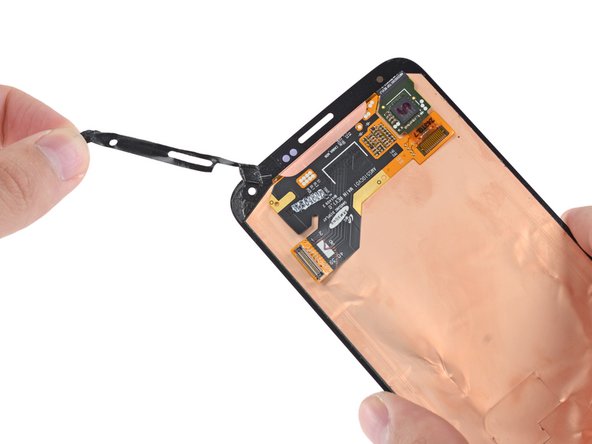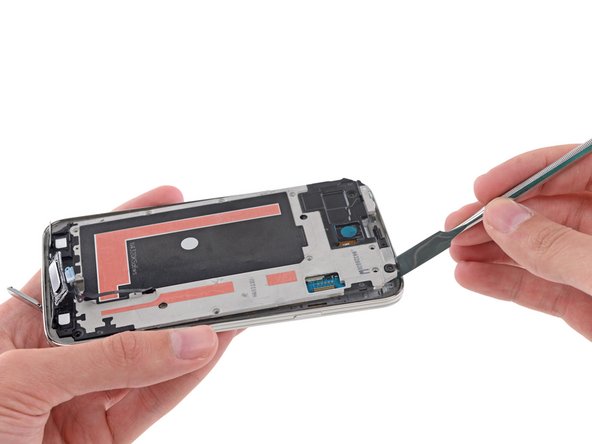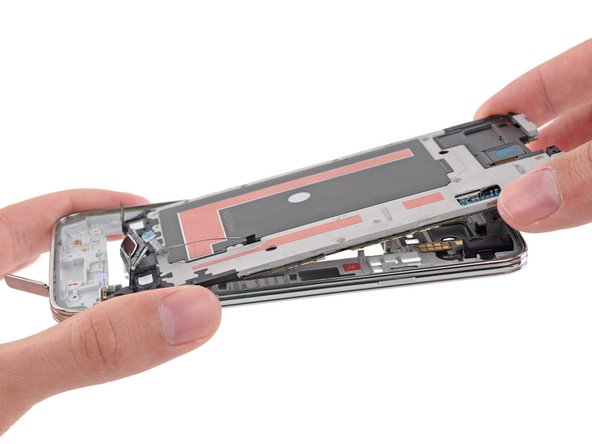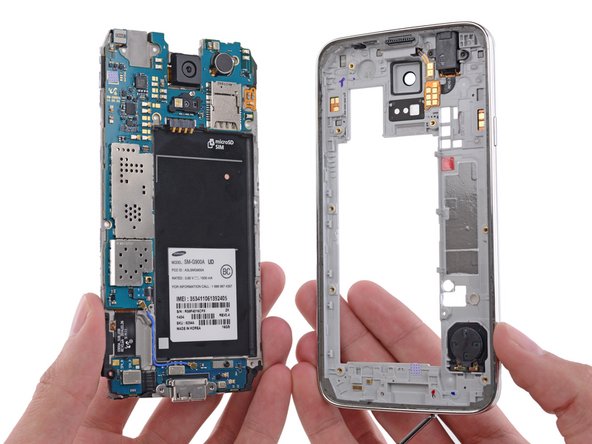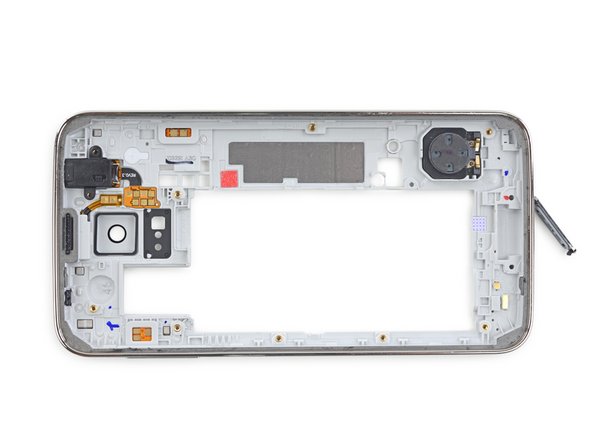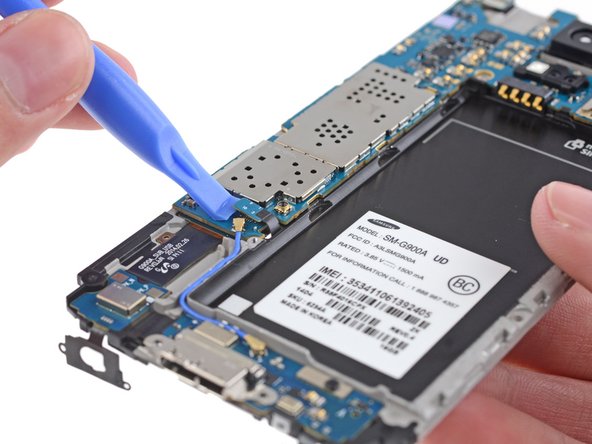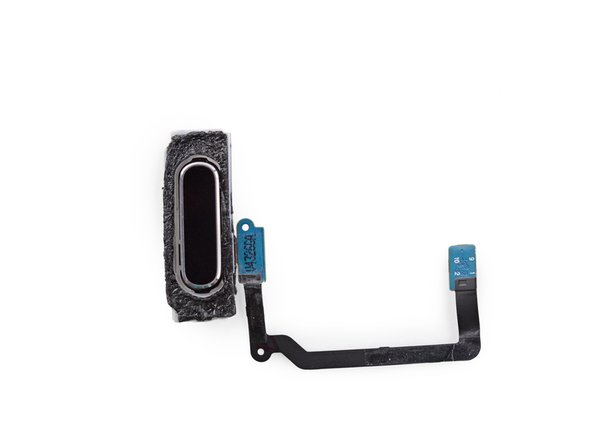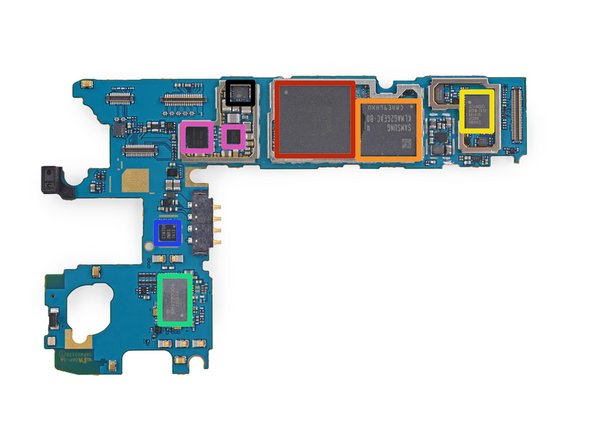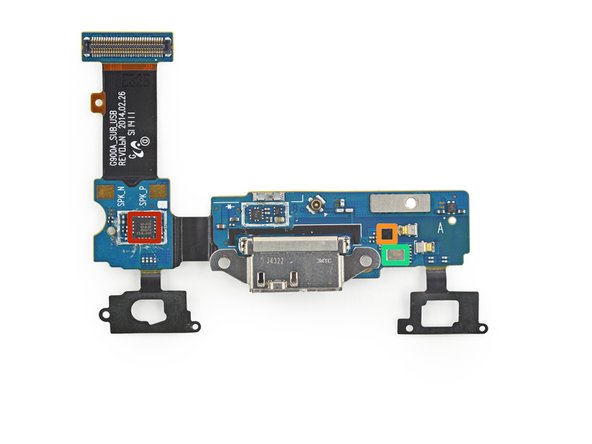News
Samsung Galaxy S5 Teardown
Date: 01-24-2018 Click: 0Video Overview
Step 1 Samsung Galaxy S5 Teardown
It's good to have a galaxy to play with, 'cause we're gonna need a lotta space for all this hardware:
5.1” Super AMOLED display (1920 x 1080, 432 ppi)
16 MP rear-facing camera with 4K video at 30 fps; 2 MP front-facing camera with 1080p video and wide-angle lens
Sensors for fingerprint, heart rate, gestures
2.5 GHz quad-core Snapdragon 801 processor, 2 GB LPDDR3 RAM
16/32 GB internal memory, plus microSD up to 128 GB
LTE, NFC, Bluetooth 4.0 BLE, Micro-USB 3.0, 802.11/ac MIMO Wi-Fi
Step 2
Our initial sensor sweep reveals no life signs—just lots of life-sensing equipment.
From fingerprint scans to interpretive gestures, this phone shows signs of high-level interaction with an advanced civilization. Also,dimples.
Visible beneath the 16 megapixel rear camera: a heart rate monitor. Useful when you need to monitor your heart rate from your smartphone. So basically all the time.
Step 3
Port ho! This silver bay is a Micro-B USB 3.0.
And it's open. Down to the battery at least. Tears of joy fall silently around the teardown table.
Peeling the back off this phone is easier than peeling a banana; the only tool required is an opposable thumb.
Despite negative reviews of the case design, the ease of removal is a big plus for us.
What's that, no battery?
Samsung seems to be promoting the DIY lifestyle. Not only is this battery replaceable, it needs to be user installed. That deserves an internet high-five.
Step 4
No need to hitchhike to the edge of this galaxy to find the back case; it's free and clear.
We're guessing that this strange shape in the case is not a remnant of space creatures, but a rubber gasket. Samsung chose the minimalist's approach to water and dust resistance ove rmore problematic methods.
So don't go taking your new phone to the dunk-tank. If you do—or better yet, before you do—get yourself a Thirsty Bag.
Step 5
We briefly glance at the warnings as we pull the battery out of its fancy packaging.
Questionable batteries will apparently explode when installed.
This is a 3.85 V, 10.78 Wh battery. Samsung touted a better battery-saving mode, but failed to specify the life of this guy in its advertising—listing the battery spec as 2800 mAh.
This is a slight upgrade from the S4's 3.8 V and 2600 mAh (9.88 Wh) battery. Advertised at 7 hours of talk time, and up to 12.5 days of standby.
We install the new battery. Then, we take it back out. This teardown has places to be and they're under that battery pack.
For those keeping track at home, that took a grand total of 10 seconds. Beat that, HTC.
Step 6
Samsung has stacked the deck in our favor—the deck of microSD + SIM cards, that is.
"Galaxy S5" may be catchier, but for those who prefer a more formal designation, SM-G900A is the model number you seek.
What's behind door number R1?
So far as we can tell now, just random connectors, and certainly not the screws we were hoping for. Stay tuned, because we've got a feeling this will be important...
Step 7
Suddenly, things are looking grim. The S5's forefather, the S4, took to the teardown table like a protocol droid to an oil bath.
This time though, it seems the entire display assembly stands in the way of any further tinkering.
Step 8
Time for the final pry op—
...aw, nuts. CABLE.
Cable booby traps are like finding a pit of snakes between you and the treasure you are after. To make matters worse, Harrison Ford is nowhere to be found.
After spudging past the cable, we begin to free the display assembly. Unfortunately, Samsung seems to think that the only way to get into this phone should be glass-first.
Step 9
With the display thusly removed, we just have to convince it to part with its home button. We let our plastic opening tool do the talking.
Say goodbye to the sticky adhesive tape holding the screen down. Reinstalling your display will most likely require a fresh set of adhesive.
This little display assembly cable has a lot of bits to ferry. It's helped out by a Synaptics S5100A touchscreen controller.
This is a fairly radical change in design for the S-series. We're used to seeing internal components riding on the back of a large display assembly. The S5 turns this on its head and sandwiches the components between the display and the battery, in their own difficult-to-access compartment.
Step 10
Oh Samsung, we were hoping we might be going about this all wrong. But alas, here are the screws we needed—on the other side of the phone. Sigh.
We've reached a point of debate on Galaxy nomenclature. The consensus says we're removing the midframe from the um, midframe.
Confused? Yeah. We were, too.
Here's the deal: after peeling off the rear case, you encounter a midframe. And between that (first) midframe and the display assembly, there's this second midframe. So there you have it: double the midframe.
Step 11
So, to recap:
On the left we've got the interior midframe, with the motherboard and daughterboard
On the right we've got the exterior midframe, with a plethora of spring-contacted components
We're already on a first-name basis with the other bits in here: headphone jack, speaker, buttons, etc.
Identity crisis averted. Repairability crisis, TBD...
Also now visible, just beneath the massive rear-facing camera, Samsung's all-new heart rate monitor, powered by the Samsung SM-G900S biosensor.
Step 12
Remember door number one's mystery connector? Surprise—it was the home button cable!
This discovery is a bonus to the S5's repairability (and a classic lesson in the need for repair manuals)—disconnecting the home button cable from the start would have made the display removal much easier, and will certainly aid in reassembly.
Present and accounted for is the expected fingerprint scanner tech. The control chip is labeled 1200P E43F2.
Some say getting this print sensor to actually work requires a bit of persistence.
Step 13
Near the center of the Galaxy we find a black hole the motherboard. With the hard work done, we pop it out and start scouring for evidence of intelligence.
Our first sign comes via the camera.
Anxious for a staring contest, we use our trusty plastic opening tool to pry it out for a better look.
Step 14
On the left, we have Samsung's 16MP 1/2.6” rear-facing camera.
Touting new, faster auto-focus, this camera should enable users to finally catch a real UFO with photographic evidence.
Safe and sound in the main cam's backpack is a control chip: QDA41 L1010 R412.
Standing next to the main camera is the Hobbit selfie stunt-double, a 2.0 MP front-facing camera.
This little wide-eyed wide-angle lens shoots with a resolution of 1920 x 1080.
Step 15
Some galaxies have stars. Others have chips:
Elpida FA164A2PM - The same 2 GB RAM package we found in the HTC One (M8), and different from the 2 GB Samsung chip found in Chipworks' analysis. Quad-core 2.5 GHz CPU likely layered beneath
Samsung KLMAG2GEAC-B0 16 GB on-board memory
Avago ACPM-7617 multi-mode, multi-band RF front end
Murata KM4220004 (likely Wi-Fi module)
1412 (C1N75R UMR3) (C1N78B YMP4)
Maxim Integrated MAX77804K (System PSoC) and MAX77826
STMicroelectronics 32A M410
Step 16
SWEP GRG28 antenna switch module (thanks Chipworks)
Qualcomm WTR1625L RF transceiver (another encore from the HTC One M8) and...
Qualcomm WFR1620 receive-only companion chip
Qualcomm PMC8974 power management IC
Lattice iCE40 LP1K low-power FPGA
Invensense MP65M (MPU-6500M) gyroscope/accelerometer
Qualcomm WCD9320 audio codec
SIMG 8240B0 mobile HD-link transmitter and NXP 47803 NFC controller
Step 17
With the motherboard out of the way, we find ourselves short of parts. All we have left is a lonely little daughter board.
Home to the charging port, a closer examination of this daughter board reveals cables for the bottom buttons, as well as a smattering of ICs:
Cypress CY8C20075-24LKXI CapSense capacitive touch-sensing controller
RFMD RF1119 antenna controller
S1221 primary microphone
Step 18

Samsung Galaxy S5 Repairability Score: 5 out of 10 (10 is easiest to repair).
The battery is incredibly easy to remove and replace.
The display is now one of the first components out, making replacements a little faster. However, it is held in with a significant amount of adhesive and requires very careful and persistent prying and a considerable amount of heat to remove without cracking the glass or cutting cables.
Once you get the device open, several components are modular and fairly easy to replace, such as the cameras, headphone jack, vibrator motor, and speakers.
Replacing anything other than the battery requires first removing the display, risking extra damage on the way to a repair.
Products Sort
- Finger Spinner
- Apple Mobile
- Samsung Mobile
- Xiaomi Mobile
- Huawei Mobile
- LG Mobile
- Motorola Mobile
- Sony Mobile
- Asus Mobile
- OPPO Mobile
- Meizu Mobile
- Vivo Mobile
- LeEco Mobile
- Mobile Phone TOOLS
- PlayStation4
- PlayStation3
- PlayStation2 & PS1
- PSP1000/2000/3000/Go/PSV
- Xbox360 & Xbox & One
- Wii & GameCube
- NDS lite/NDS-i/3DS/3DS XL/2DS
- ND & GBA
- Memory Card
- DS Flash Card
- ModChip
- Other accessories
- Samsung Galaxy S5 Teardown



